Calvaries with instruments of the Passion
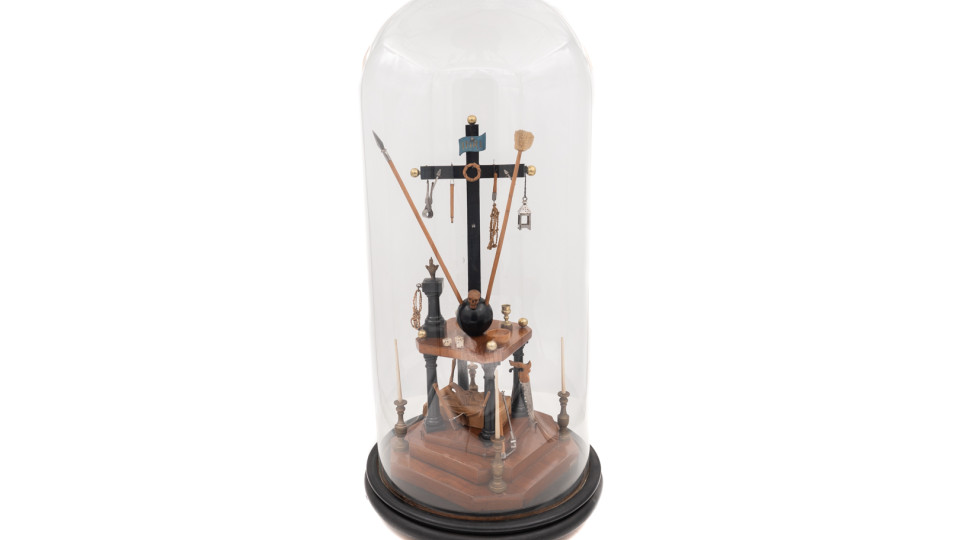
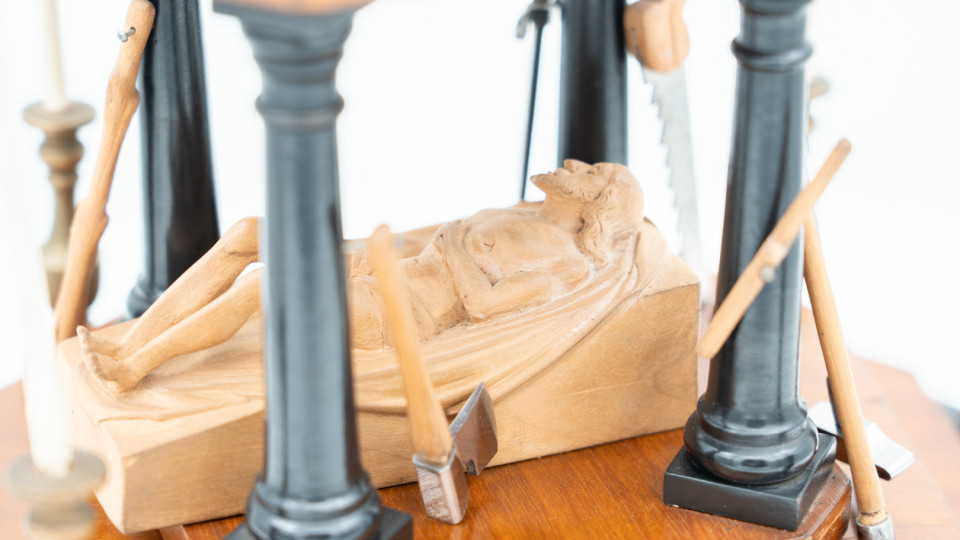
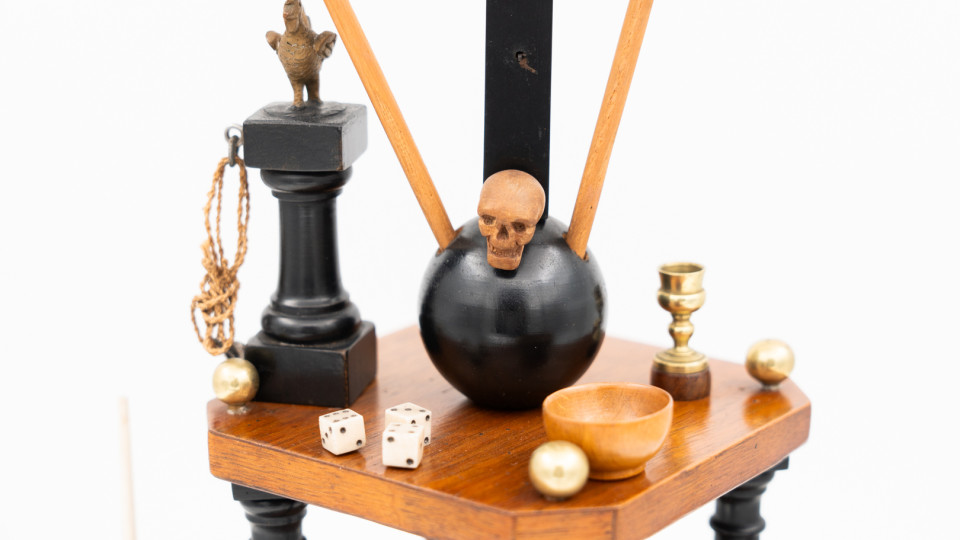
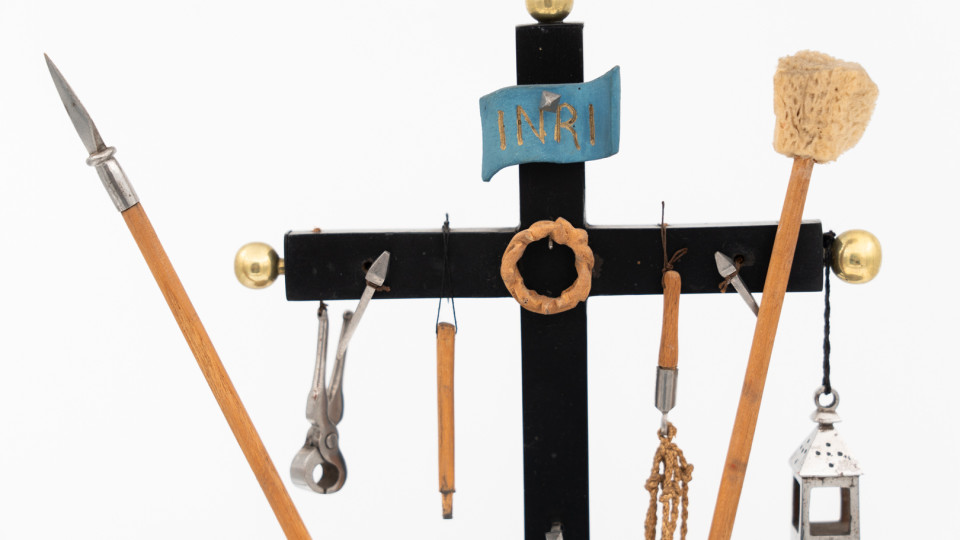
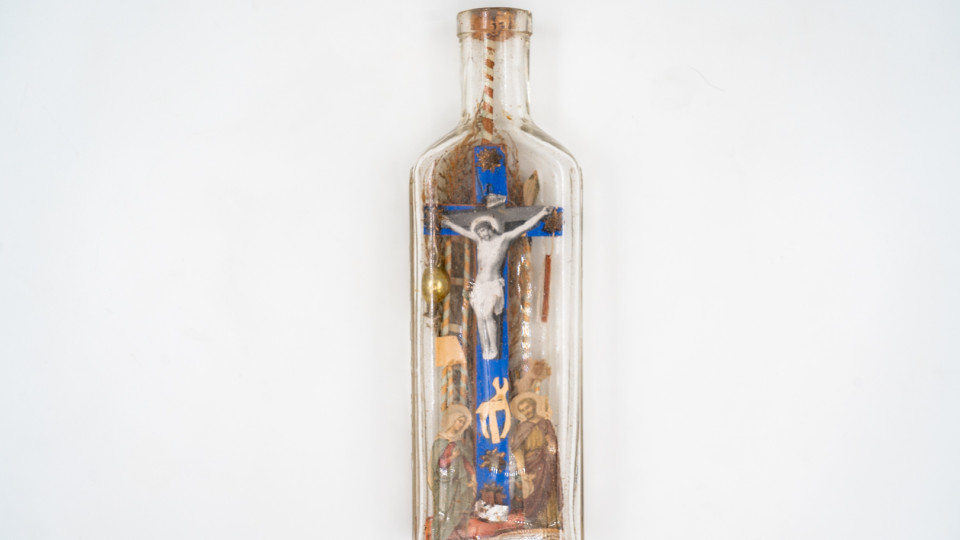
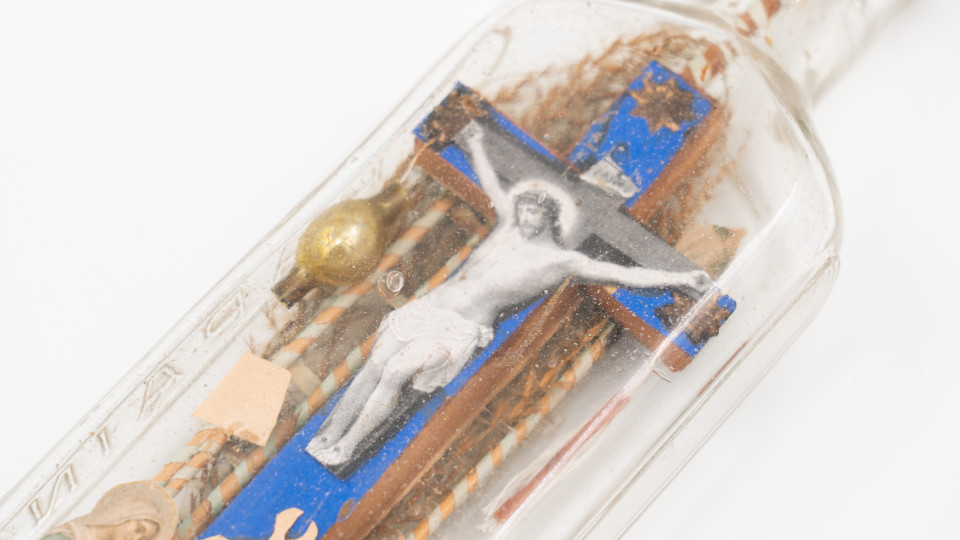
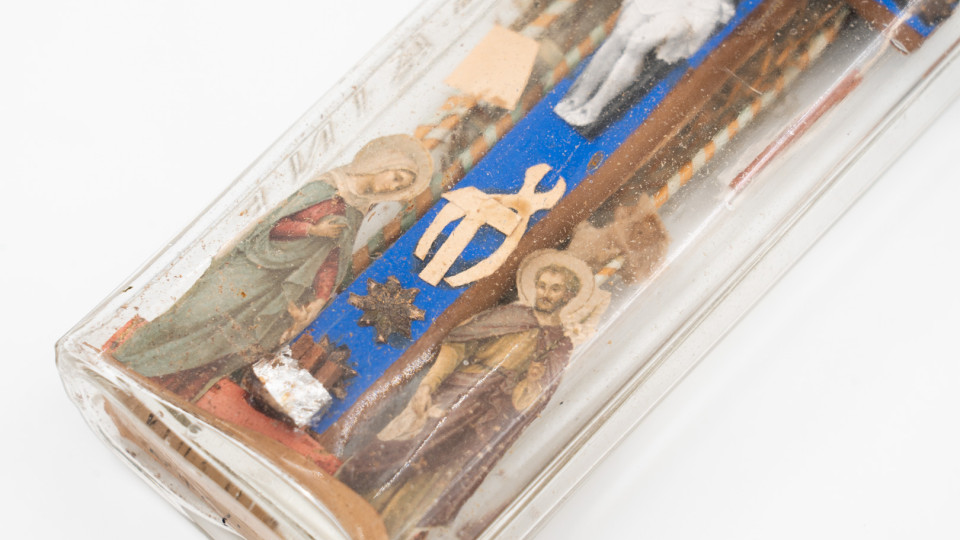
Calvaries with instruments of the Passion
These two calvaries with instruments of the Passion come from the Religious Art and Mosan Art Department. Under a globe, the first displays the instruments of Christ's martyrdom above His remains lying on the shroud. In a bottle, the second shows paper effigies of the Virgin Mary and Saint John at the foot of the crucified Christ.
Unknown
GC.REL.02b.2007.30890; C 432/2007
Mid-19th century to mid-20th century
Metal, wood
H. 54 cm; diam. 27 cm
Bottle-Calvary
Unknown
GC.REL.08a.2003.32761; N 46/2003
19th century
Glass, wood, paper, plant matter
H. 20.3 cm.; l. 6.5 cm
These two calvaries with instruments of the Passion come from the Religious Art and Mosan Art Department. Under a globe, the first displays the instruments of Christ's martyrdom above His remains lying on the shroud. In a bottle, the second shows paper effigies of the Virgin Mary and Saint John at the foot of the crucified Christ.
Miniature calvaries with instruments of the Passion are very widespread. They combine a variety of manufacturing techniques, shapes and materials, like this other specimen in wax held by the Glassware Department.
They were usually made during periods of rest by anonymous farmers, craftspeople, shepherds, sailors, lighthouse keepers, miners or religious communities.
Arma Christi
The Arma Christi (meaning the Arms of the Christ, in the heraldic sense of the word) are the instruments of the Passion of the Christ (all the events that preceded and accompanied the death of Jesus-Christ).
They feature many attributes of Christ’s victory on the Holy Cross, of which the Resurrection is the most eloquent testimony. This Christian iconography dates back to the Middle Ages and met with resounding success between the 15th and 16th centuries. In Liège, you will also find them illustrated on the Mass of Saint Gregory, a 16th century painting on display in the Cathedral Treasury.
Each of these reminders helps us to contemplate the suffering of Christ the Redeemer They appear on several types of media (engravings, paintings, crosses, etc.), often at random, and can be interpreted in several ways. Even if depicted in very large numbers, they are rarely all present. Strictly speaking, they refer to the episodes between Christ’s arrest and crucifixion but the iconography extends its inspiration more widely between Christ's entry into Jerusalem and His entombment, sometimes with references to his birth.
A meticulous work
This bottle is unique, is it not? Yet there is something familiar about it. The first thing that springs to mind are boats assembled by pliers in bottles by sailors, of course! The same process is used. This is why these ‘bottles of the Passion’ are also called ‘sailor’s bottles’. It is also easy to see why they are also known as ‘bottles of patience’!
This tradition dates back to the 18th century; several rare examples are mentioned at the very end of the 17th century. Some of them are even signed and very valuable as a result.
This popular, often modest and anonymous art became widespread in the second half of the 19th century… at the same time as serial production of cheap clear glass bottles. They came in a variety of shapes and sizes, and quickly took on a host of themes, with the only limit being imagination, with scenes inspired by religion, daily life, nature or even trades and crafts (mine workings, weaving looms, etc.). Even today, a handful of enthusiasts in search of a challenge continue to produce these bottled feats.
For the record, the bottle shown here contained papain syrup from Laboratoires Rouette & Perret in Paris, used to treat gastro-enteritis in infants and digestive plus nutritional problems in children.
Christelle Schoonbroodt, curator
Religious Art and Mosan Art Department / Grand Curtius
Exhibition location
The artefacts are visible in the object of the month showcase in the entrance hall of the Grand Curtius Museum in Liège.
Captions for visuals – Copyright: City of Liège - Grand Curtius.
Musée de Liège